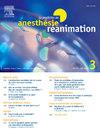Comment appréhender les comorbidités des sujets âgés avant une intervention chirurgicale ?
Q4 Nursing
引用次数: 0
Abstract
L’évaluation préopératoire d’un patient âgé a pour objectif d’analyser et réduire le risque lié à l’intervention chirurgicale et à l’anesthésie et de mettre en perspective le devenir postopératoire du patient en termes de confort et d’autonomie. Elle comprend, comme chez l’adulte jeune, la recherche des comorbidités et de leur caractère stable et optimisé. La spécificité du patient âgé réside dans le nombre de comorbidités dont ils sont généralement porteurs, la polymédication en résultant qui les expose à un risque de iatrogénie médicamenteuse et notamment d’hypotension orthostatique, d’hypoglycémie et de syndrome confusionnel. L’évaluation porte particulièrement sur les fonctions neurocognitives et la fragilité. Anémie et dénutrition sont 2 facteurs à rechercher de principe compte tenu de leur fréquence et de leur impact. L’évaluation préopératoire sélectionne les patients qui bénéficieront d’un avis et/ou d’une prise en charge gériatrique préopératoire, justifiée pour ceux qui auront une chirurgie à risque élevé de complications, et dont la gestion des comorbidités paraît complexe, mais sous réserve que la préservation de l’autonomie soit un objectif réel et réaliste. Dans tous les cas, une optimisation préopératoire multimodale doit être envisagée, entrant dans un algorithme décisionnaire établi en concertation avec les différents interlocuteurs médicaux et chirurgicaux impliqués.
The preoperative assessment of an elderly patient aims analyzing and reducing the risks associated with surgery and anaesthesia while considering the patient's postoperative outcomes in terms of comfort and autonomy. As with younger adults, it includes identifying comorbidities and ensuring they are stable and optimized. The specificity of elderly patients lies in the number of comorbidities they commonly present, the resulting polypharmacy that exposes them to the risk of drug-related iatrogenesis. This should be diagnosed and addressed, with particular attention to the risks of orthostatic hypotension, hypoglycemia, and delirium. This assessment also includes important specificities such as neurocognitive and frailty evaluations. Anemia and malnutrition are two significant risk factors for complications frequently documented in elderly surgical patients and should be systematically screened. The preoperative assessment should help identifying patients who could benefit from a geriatric consultation and/or preoperative management. It is reasonable to request this intervention for patients undergoing surgery with a high risk of complications, especially when managing comorbidities appears complex. However, this should be done only if preserving patient autonomy remains a real and achievable goal. In all cases, a multimodal preoperative optimization should be considered. This can be multidisciplinary if preserving autonomy is the ultimate objective, following a decision-making algorithm established in collaboration with the various medical and surgical stakeholders involved.
如何在手术前处理老年患者的共病?
老年患者术前评估的目的是分析和降低与手术和麻醉相关的风险,并在患者术后的舒适度和独立性方面展望患者的未来。就像在年轻人中一样,它包括寻找共病及其稳定和优化的特性。老年患者的特殊性在于他们通常携带的合并症的数量,由此产生的多药治疗使他们面临药物缺血的风险,特别是直立性低血压、低血糖和混淆综合征。评估特别关注神经认知功能和脆弱性。贫血和营养不良是考虑到其频率和影响的两个主要因素。术前评估的患者将受益于汉代的意见和/或老年护理术前理由,对于那些高风险手术的并发症,且并发症管理看起来很复杂,但只要保持自治,即一个真实和现实的目标。在所有情况下,必须考虑术前多模态优化,作为与相关医疗和外科合作伙伴协商建立的决策算法的一部分。对老年患者的术前评估旨在分析和降低与手术和麻醉相关的风险,同时考虑患者术后舒适度和自主性方面的结果。与年轻人一样,它包括识别共病,并确保它们是稳定和优化的。老年患者的特异性在于他们通常存在的合并症的数量,由此产生的多种药物使他们面临药物相关的血管生成风险。这应该得到诊断和解决,特别注意直立性低血压、低血糖和谵妄的风险。这项评估还包括重要的特异性,如神经认知和虚弱评估。贫血和营养不良是老年外科患者并发症的两个重要危险因素,经常被记录下来,应该系统地进行筛查。术前评估应有助于识别可能受益于老年咨询和/或术前管理的患者。对于并发症风险较高的手术患者,特别是在管理合并症似乎很复杂的情况下,要求进行这种干预是合理的。然而,只有在保持患者自主仍然是一个真实和可实现的目标的情况下,才应该这样做。在所有情况下,都应考虑多模式操作前优化。如果保持自主性是最终目标,这可以是多学科的,遵循与相关的各种医疗和外科利益相关者合作建立的决策算法。
本文章由计算机程序翻译,如有差异,请以英文原文为准。
求助全文
约1分钟内获得全文
求助全文
来源期刊

Praticien en Anesthesie Reanimation
Medicine-Anesthesiology and Pain Medicine
CiteScore
0.10
自引率
0.00%
发文量
61
审稿时长
51 days
期刊介绍:
Conçu et élaboré pour la formation médicale continue des anesthésistes réanimateurs, Le Praticien en anesthésie réanimation répond à des objectifs clairement définis. - Être au plus près de votre quotidien : la revue vous apporte des réponses immédiatement opérationnelles aux problèmes rencontrés dans votre exercice.
 求助内容:
求助内容: 应助结果提醒方式:
应助结果提醒方式:


